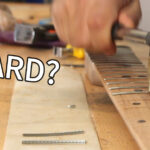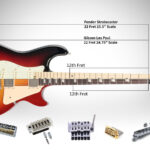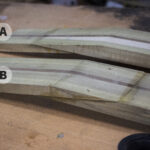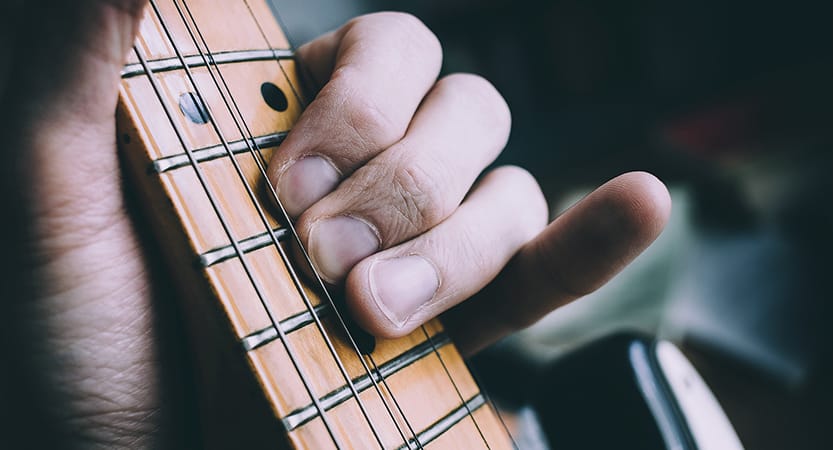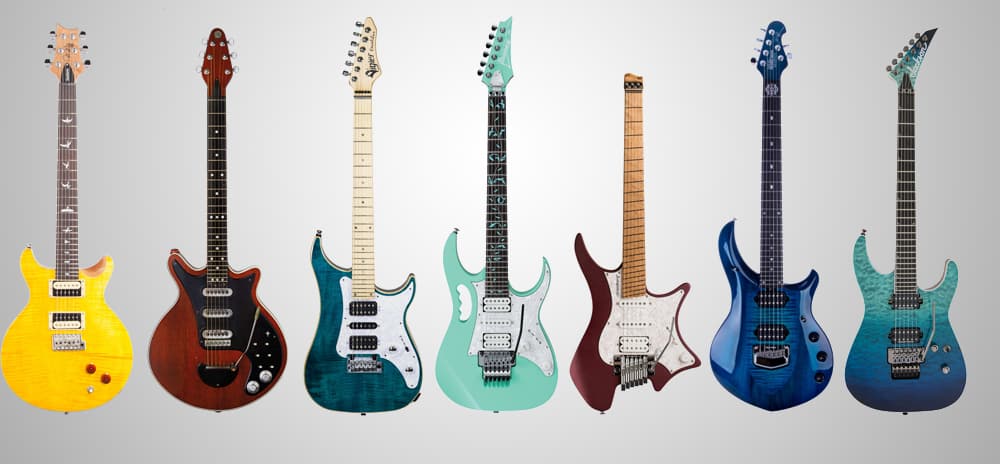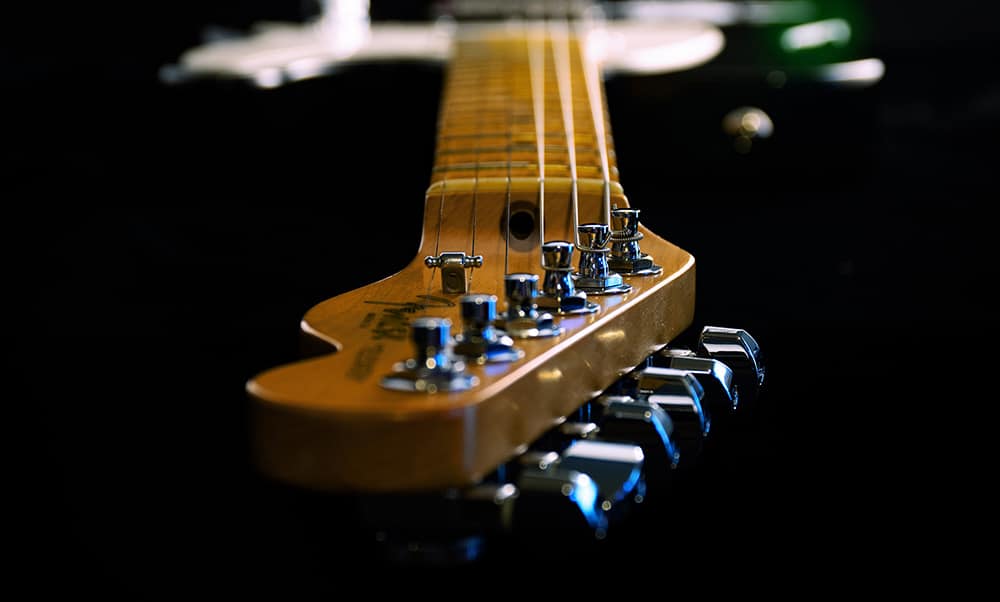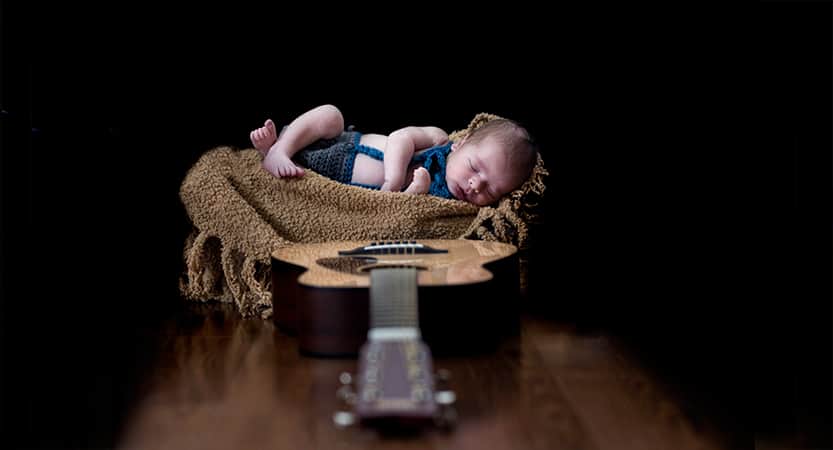Electric guitars didn’t just become a thing, they’ve been in existence since the early 1900s, and their popularity has continued to grow over time, with pop stars already adopting it as one of their most valid musical instruments. Like most other musical instruments, the history of the electric guitar and how it got fully adopted is one that is worth studying. Here, we will be taking a look at the creator of the electric guitar, as well as a few other important facts on how the electric guitar evolved into a modern musical instrument.
First, Who Invented the Electric Guitar?
The first real electric guitar in the early 1900s, is attributed to Adolph Rickenbacker, an electric engineer, and George Beauchamp, a musician. The duo made improvements on several earlier inventions to produce an electric guitar that’s modern and commercially viable.
Yes, quite a number of people had made attempts before them, with some even going as far as attaching carbon button microphones to the guitar’s bridge, but Rickenbacker and George became the first to design an actual guitar that will be amplified electrically, with a sound quality that’s great for use for professional music.
Read on, because we’ll be taking a closer look at the story behind this great invention, as well as events that led up to it.
Brief History of Electric Guitar
The need for electric guitars stayed for quite a long time before its actual invention. The need specifically arose when music bands began to gain large followings and crowds that turned up for concerts were too large for the classic guitar to bring the needed vibe. The problem escalated rapidly in 1880s and music bands needed to find an alternative that will bring back the heat to their concert hall outings. Soon, they turned to drums and brass to power up their stage, hence, relegating the acoustic guitar to fall among second-tier instruments, because it was increasingly becoming difficult for even the band musicians to hear the melodies from them in most cases. At this stage, there was a dire need for the invention of a guitar that could meet up to the level of energy needed in large concert halls.
George Beauchamp, seeing a glaring need that could help music bands to perform better swung into action. Of course, earlier inventions already had bits and pieces and all he needed to do was to thoughtfully put things together. Beauchamp came up with the first complete electric guitar in the comfort of his home, although the guitars look was quite crude compared to what we have now. (patents.google.com/patent/US2089171) Before the invention, however, he played the Hawaiian guitar which was popular at that time. Historians still suggest that Hawaiian music was one of the major factors that led to the creation of electric guitar.
We’ve stated earlier here that before George Beauchamp’s’ invention, there had been several minor designs by several jazz musicians who tried to attach things that would help amplify the sound of existing wooden guitars, although most of them didn’t achieve great results. Then came the electrification of the Hawaiian-style lap steel guitar. These guitars were called lap guitars because of how they were placed on the laps when being played. Eventually, brass was inculcated into the production of guitars producing louder and more desirable sounds than wooden guitars.
At this same time, manufacturers began to experiment the use of metal, and electrical amplification suddenly began to become reality.
Beauchamp would later get to meet Rickenbacker in Los Angeles where they stroke a deal to work together on a project that would modernize the electric guitar. Adolph Rickenbacker already had a booming career in the manufacture and sale of different electric musical instruments. His company, Rickenbacker International Corporation was popular, thanks to his ability to see and pursue good opportunities in the area of musical instruments manufacture.
Rickenbacker partnered with Beauchamp, and after many experiments came up with an electromagnetic device that was specially designed to pick up vibrations with extra clarity from guitar strings. Obviously, the experiment became a success, and electromagnets were able to clearly convert string vibrations to electrical signals that can be amplified with the aid of speakers.
By this time, it was obvious that rock music was being teleported to a whole new world.
Evolution of Electric Guitar
Enough of all the long stories about the first electric guitar and how it was invented, after all, you probably have never seen how the first guitar looked or how it evolved into what we have today. Well, now this section will be dedicated to telling how the first electric guitar invented by Rickenbacker evolved into what we have and play today. The electric guitar like most modern gadgets and musical instruments has gone through different stages of evolution, before reaching what we have today; however, for the purpose of this article, we will be dwelling more on the popular and most important stages in the evolution of electric guitars since invention. Of course, the ongoing periods of the electric guitar evolution are contributory to the refined designs we have today, so it’ll not be too fair to discuss the history of the electric guitar without discussing how it evolved into what we have today.
The Early Days
- 1931: The Rickenbacker Frying Pan Guitar: The first electric guitar that was ever manufactured was named Rickenbacker Frying Pan. Like we’ve stated earlier, the instrument was invented by George Beauchamp in 1931, and was eventually manufactured in bulk by Rickenbacker Electro. The name of the instrument was drawn from its frying pan resemblance. It was produced as a lap steel guitar and thrived on the 1920s popularity of the Hawaiian music. The guitar began sale in 1932 and gained quick popularity among rock stars.
- 1935: The Rickenbacker Electro String: This guitar was produced as an immediate follow-up to the frying pan model. It was made as an improvement to the former model. Electro String was the name of the company that originally created the electric guitar, although it later changed its name to Rickenbacker, after Adolph Rickenbacker. By 1953, the company was sold to F.C. Hall, and that marked Adolph Rickenbacker’s exit from the music scene. Behold! A new era was born.
- 1941: Les Paul “Log”: In 1941, Les Paul persuaded and convinced Epiphone so that he could use their workshop on Sundays for work and that was the first move that gave birth to the Les Paul “Log”. At this stage, he mounted a Gibson pickup onto a block of maple wood, especially attaching the strings deal with the feedback problems of acoustic guitars. For look and style, he used an Epiphone hollow-body guitar. The popularity of his design soared quickly since it solved to major problems that were noticed in acoustic guitars: Sound and string energy sustainability.
- 1947: Bigsby-Travis Guitar: Paul Bigsby gained popularity among the music in the 1940s for his creation of the “Bigsby Vibrato”. Before then, he had served as a foreman in Crocker Motorcycle owned by Albert Crocker. He had an unusual love for motorcycles and country music. His love led him to become friend with Merle Travis, a country-western musician. Historians suggest that the vibrato design became a thing right from the day Bigsby was asked by Travis to attempt fixing a Kaufman Vibrator unit. Instead of fixing, he created something completely new. His new creation featured something that would subsequently become Useful on developing solid body electric guitars.
Solid Bodies Leading the Revolution
- 1948: Fender Broadcaster (Telecaster): At this stage, after a few evolutions, there was the need for a guitar that concentrated more on practicality and utility. Leo Fender stepped up to the challenge to create something that was for once not focused on improving design aesthetic. He wanted to turn the regular guitar into something that could produce sounds likened to that from Hawaiian guitars and he wanted to do so while eliminating the feedback problems. With a series of experiments, he arrived at the Broadcaster, a two-pickup model that incorporated truss rids on its fender neck.
- 1953: Gibson Les Paul Guitar: This model came after collaboration between Gibson Guitar Corporation and Les Paul. The inculcation of Fender Telecaster on electric guitars caused a major stir in the music market, and as expected, people wanted their guitars to take this new design. As a response to the market trend, Ted McCarty, the president of Gibson Guitar quickly brought Les Paul, a renowned guitarist as a consultant in his company. Les Paul had already proven his prowess in innovation, having experimented over the years with his “Log” model. Gibson signed him in 1950 with his design and subsequently, their partnership led to a big leap in the world of electric guitar.
- 1954: Fender Stratocaster: There was no doubt about the growing popularity of the electric guitar in the 1950s. Demand was climbing and inventors had to top their game to meet up with growing demands. In 1954, Leo Fender, Freddie Tavares, and George Fullerton partnered to design the Fender Stratocaster, popularly known as “Strat”. This guitar was indeed a revolutionary guitar at that time largely for three reasons, including:
* It had a specially crafted double cutaway neck.
* It had its tremolo unit built to relax completely on the floating bridge
* It became the first solid-body guitar to come with up to three pickups.
Breaking the Mould
- 1979: Van Halen “Frankenstrat”: After so long, another evolution was needed, and this time, Eddie attempted to combine a Fender and Gibson. This was the stage that marked the start of an era when guitar playing became more technical and hyperfast. Here, higher output pickups were allowed, alongside some really fine tremolo units, and better-looking necks. Virtually, this model was a complete restructuring of everything, from look to sound and playing technicality.
- 1994: Ibanez 7-String Guitar: The popular solid-body 7 string guitar made its debut into the guitar world in the 90s when Steve Vai worked with Ibanez guitars for its production. The guitar model, however, became popular when the Ibanez Universe guitars were featured by the Korn band in the debut album, released in 1994. This was the period when the seven-string guitar’s popularity blew out of the roofs, and manufacturers began to jump on the trend. Today, a number of rock artists still use the 7-string guitar to electrify their stage performances.
- 2008: Guitar Hero Controller: Obviously, the Guitar Hero series has made some really huge impact on the cultural music scene. In fact, it has today been named as a “cultural phenomenon”. The series has done a lot in changing the way music education is handled for children, as well as influencing big changes in the music industry and in the use of music for video games. The series has also played a major role in the use of music as therapy for recovering patients. A lot of music scholars are already tagging the Guitar Hero as one of the most influential products to grace the surface of the earth in the early decades of the 21s century.ie
Related Questions
When Did The Electric Guitar Become Important?
Technically, the electric guitar was created out of a perceived need for amplifying sounds in concert halls; however, it was during the 1850s and 1960s that it became an instrument that almost couldn’t be done without in music, so we can easily say it’s made its hit in the late 1950s
Can The Sound of an Electric Guitar be heard without an Amplifier?
Definitely no! An amplifier helps to project the sound of the electric guitar. Technically, if not connected to an amplifier, the electric guitar produces sounds similar to an acoustic guitar. When looked at from a different perspective, however, you can play it as acoustic without an amplifier.
The electric guitar has undergone a lot of evolution over time, but you can’t ignore it’s past and the evolution it has over gone through over the years. It will keep going places, taking melody as it goes to every parts of the world

